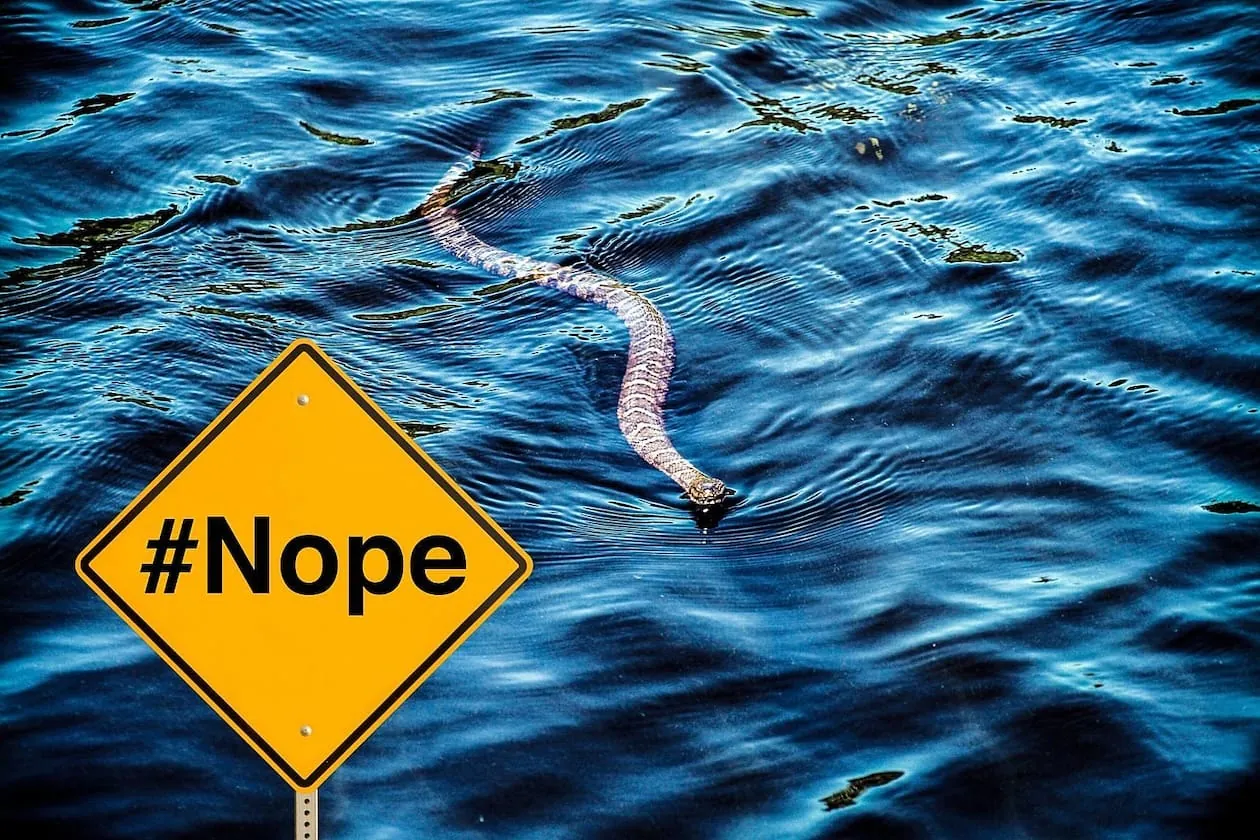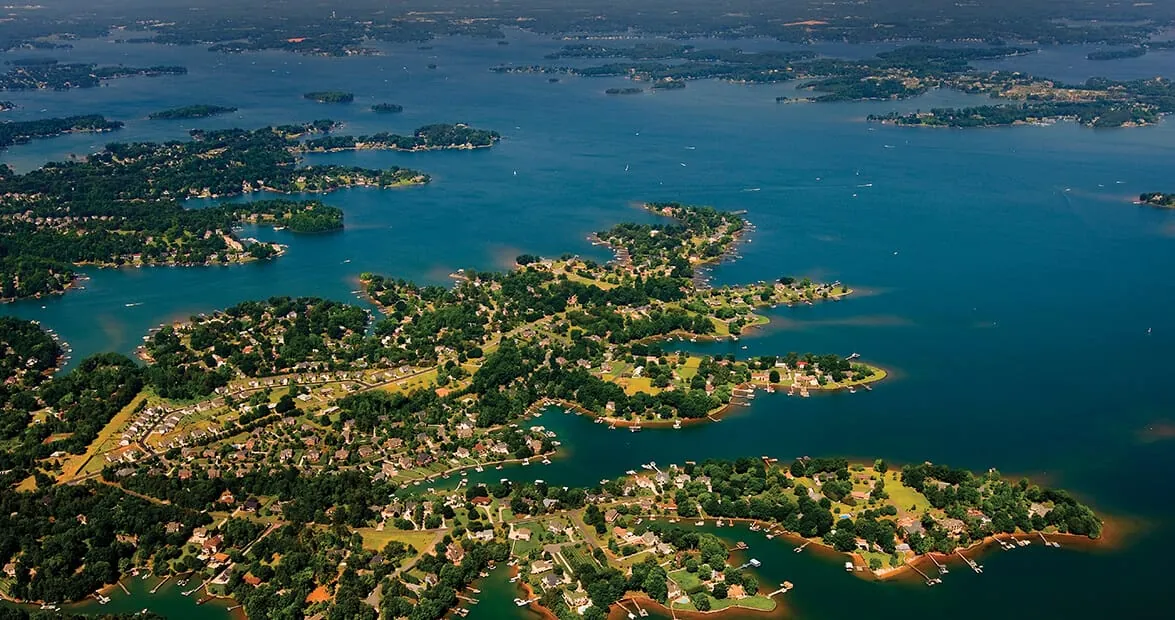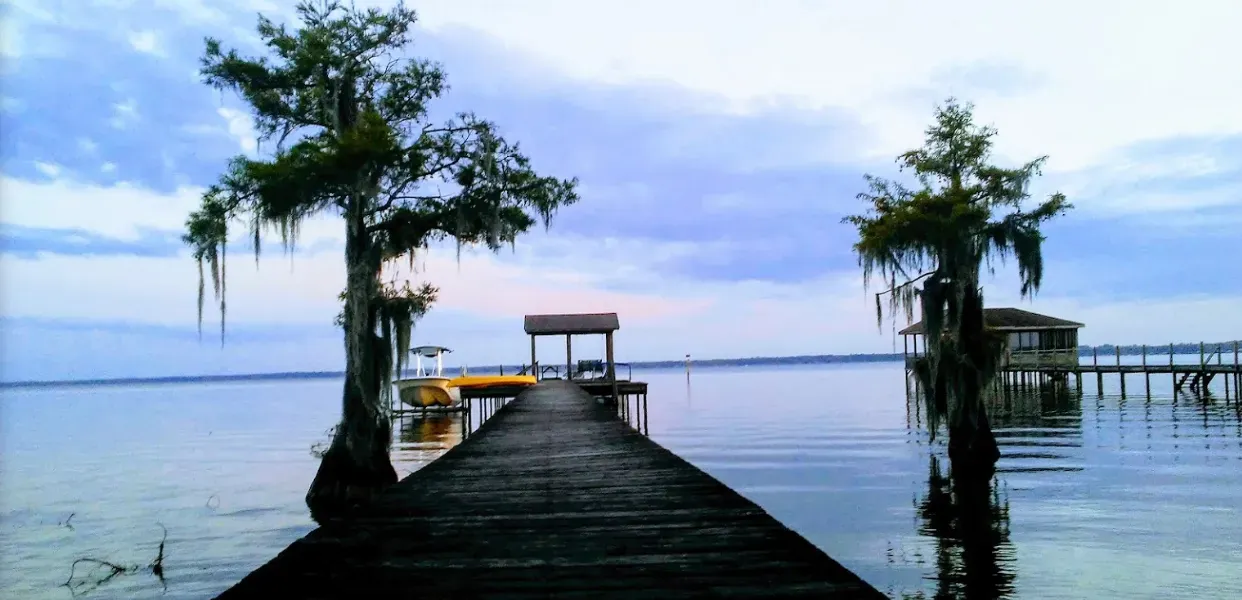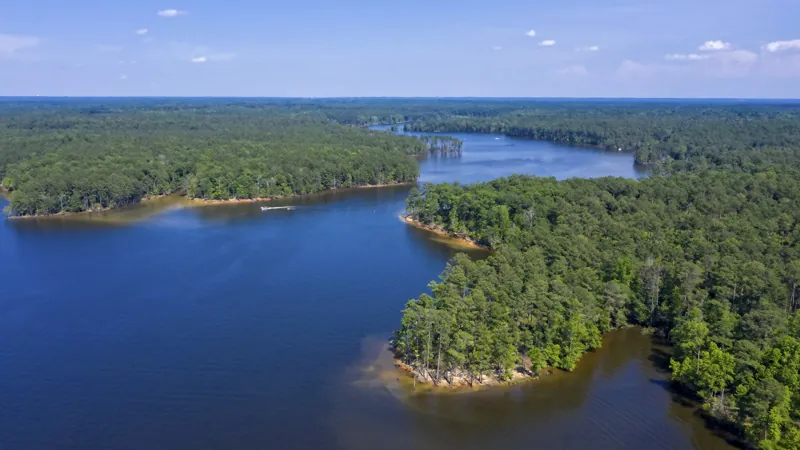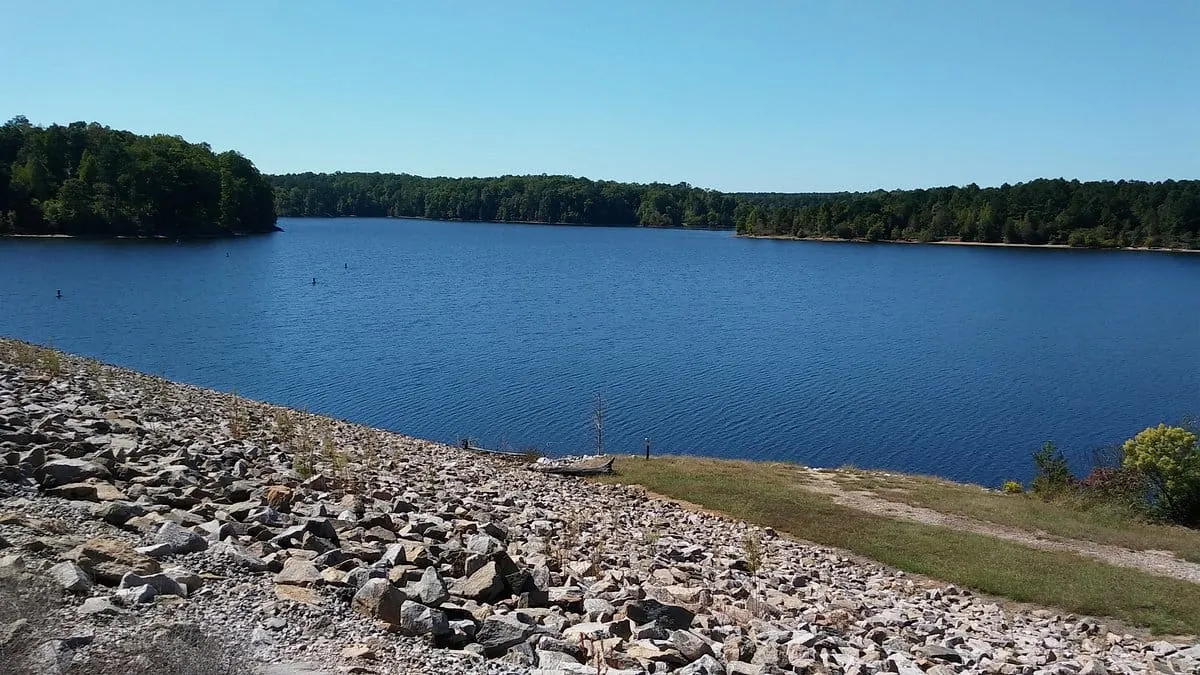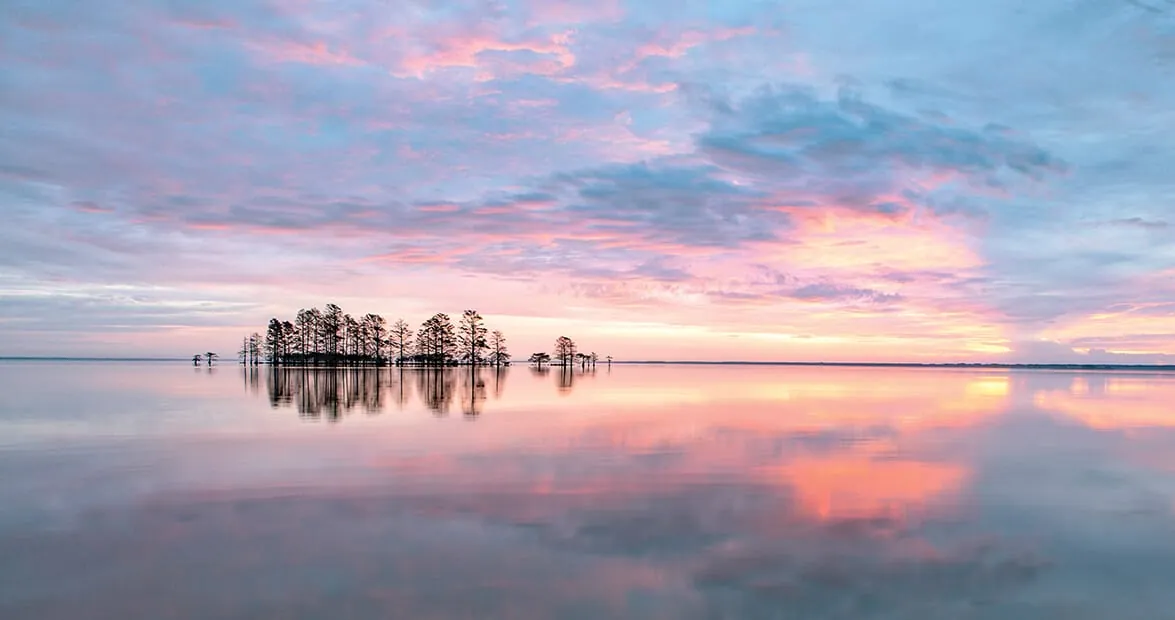North Carolina is renowned for its picturesque lakes, which offer residents and visitors alike the opportunity to indulge in a range of recreational activities. However, these scenic bodies of water also serve as habitats for a variety of wildlife, including snakes. While most snakes found in North Carolina are harmless and play an essential role in the ecosystem, some lakes have a reputation for being particularly snake-infested. This article will explore the most snake-infested lakes in North Carolina, provide an overview of the types of snakes you might encounter, and offer tips for staying safe while enjoying the great outdoors.
North Carolina is a state blessed with diverse landscapes, from the towering Appalachian Mountains to the sprawling coastal plains. Among its many natural treasures, the state’s lakes stand out as prime destinations for recreation and relaxation. Whether it’s fishing, boating, or simply enjoying the serene views, North Carolina’s lakes offer something for everyone. However, these bodies of water are also home to a variety of wildlife, including snakes. While most snakes are harmless and shy away from human contact, certain lakes in North Carolina are known to have higher snake populations, making them particularly snake-infested.
In 2024, with increasing awareness of wildlife interactions and the ongoing importance of preserving natural habitats, it’s crucial for lake-goers to be informed about the types of snakes they might encounter and how to stay safe. This article will provide a comprehensive overview of the most snake-infested lakes in North Carolina, detailing the types of snakes commonly found, recent snake activity, and essential safety tips for those planning to visit these areas.
Understanding Snakes in North Carolina
Overview of Snake Species in the State
North Carolina is home to a diverse range of snake species, with approximately 38 different types of snakes found across the state. These snakes range from the harmless and beneficial rat snakes, which help control rodent populations, to the more dangerous venomous species like the copperhead, cottonmouth (water moccasin), and the eastern diamondback rattlesnake.
Common Snake Species Found Near Lakes
Lakes and other water bodies in North Carolina provide an ideal habitat for several snake species, especially those that thrive in wet environments. Some of the most common snakes found near lakes include:
- Northern Water Snake: Often mistaken for the venomous cottonmouth, the northern water snake is non-venomous and typically found basking on rocks or swimming near the shore.
- Cottonmouth (Water Moccasin): A venomous snake known for its distinctive white mouth, the cottonmouth is semi-aquatic and often found in or near water.
- Copperhead: While not aquatic, copperheads are frequently found in wooded areas near water bodies and are known for their excellent camouflage.
Venomous vs. Non-Venomous Snakes
Understanding the difference between venomous and non-venomous snakes is key to staying safe. Venomous snakes in North Carolina include the copperhead, cottonmouth, and various species of rattlesnakes. These snakes possess venom that can be dangerous, especially if not treated promptly. Non-venomous snakes, on the other hand, pose little threat to humans and often help control pest populations.
The Ecological Role of Snakes in Lake Environments
Snakes play a vital role in maintaining the balance of ecosystems, including those around lakes. They help regulate populations of fish, amphibians, and small mammals, which in turn keeps the food web in check. While their presence may be unsettling to some, snakes are an integral part of North Carolina’s natural environment.
The Most Snake-Infested Lakes in North Carolina
In 2024, several lakes in North Carolina have gained notoriety for their high snake populations. These lakes, while beautiful and popular for recreation, also serve as prime habitats for various snake species.
Lake Norman
Located just north of Charlotte, Lake Norman is the largest man-made body of fresh water in North Carolina. It’s a popular destination for boating, fishing, and other water activities. However, Lake Norman is also known for its significant snake population, particularly of water snakes and copperheads.
Lake Waccamaw
Situated in Columbus County, Lake Waccamaw is a unique ecosystem and part of the Carolina Bay lakes. This lake is home to a diverse range of wildlife, including a notable number of snakes. The surrounding swamps and wetlands provide an ideal environment for species like the cottonmouth.
Jordan Lake
Jordan Lake, located in the heart of North Carolina, is a favorite spot for camping, fishing, and hiking. It’s also known for its large snake population, including both non-venomous water snakes and venomous species like the copperhead and cottonmouth.
Falls Lake
Falls Lake is a reservoir located in the northern part of the state, near the city of Durham. The lake and its surrounding areas are known for their natural beauty and recreational opportunities. However, the abundance of snakes, particularly in the warmer months, has earned Falls Lake a reputation as a snake hotspot.
Lake Gaston
Straddling the border between North Carolina and Virginia, Lake Gaston is a popular vacation spot known for its fishing and boating. The lake’s shoreline and surrounding forests are home to a variety of snake species, making encounters relatively common.
Lake Mattamuskeet
Lake Mattamuskeet, located in Hyde County, is the largest natural lake in North Carolina and is part of the Mattamuskeet National Wildlife Refuge. This lake is a haven for wildlife, including a variety of snake species. The wetlands and marshes around the lake are particularly conducive to snake habitation.
Detailed Profiles of Snake-Infested Lakes
Lake Norman
Location and Description
Lake Norman, created by the Cowans Ford Dam on the Catawba River, is not only the largest man-made lake in North Carolina but also one of the most visited. Spanning over 50 square miles, it’s a hub for water sports, fishing, and lakeside living. However, the dense vegetation along its shores and the warm climate make it an ideal habitat for snakes.
Common Snake Species Found
The most commonly encountered snakes at Lake Norman are northern water snakes, which are non-venomous but can be mistaken for more dangerous species due to their aggressive behavior when threatened. Copperheads are also frequently spotted, particularly in the more wooded areas around the lake.
Incidents and Sightings in 2024
In 2024, there have been numerous reports of snake sightings around Lake Norman, particularly in the spring and summer months. The mild winter led to an early emergence of snakes, with several reports of copperhead encounters near popular picnic areas and trails.
Lake Waccamaw
Unique Ecosystem and Biodiversity
Lake Waccamaw is part of the Carolina Bay lakes, which are known for their mysterious origins and unique ecosystems. The lake’s slightly acidic water and surrounding wetlands create a rich environment for wildlife, including a variety of snake species.
Snake Species Prevalent in the Area
Cottonmouths are the most commonly encountered venomous snakes at Lake Waccamaw. These snakes are well-adapted to the wet, swampy conditions of the area and are often seen basking on logs or swimming in the shallows. Non-venomous species like the black racer and eastern hognose snake are also common.
Snake Sightings and Statistics from 2024
In 2024, there have been several confirmed sightings of large cottonmouths in the vicinity of Lake Waccamaw, particularly near the hiking trails that wind through the wetlands. Visitors are advised to exercise caution and stay on designated paths to avoid accidental encounters.
Jordan Lake
Popularity for Recreation and Wildlife
Jordan Lake, located west of Raleigh, is one of North Carolina’s most popular outdoor destinations. With over 1,000 campsites and numerous recreational opportunities, it attracts thousands of visitors each year. The lake is also a thriving habitat for wildlife, including a significant snake population.
Types of Snakes Commonly Observed
Water snakes are frequently seen at Jordan Lake, often mistaken for the venomous cottonmouth. Copperheads are also common, particularly in the wooded areas surrounding the lake’s many campsites.
2024 Snake Encounter Reports
In 2024, Jordan Lake has seen a rise in snake encounters, particularly during the summer months when the park is most crowded. Rangers have issued warnings to campers and hikers, advising them to be vigilant and to avoid leaving food or garbage around that might attract rodents, and in turn, snakes.
Falls Lake
Proximity to Urban Areas and Impact on Snake Population
Falls Lake is located just a short drive from the urban centers of Raleigh and Durham, making it a popular retreat for city dwellers. However, the proximity to urban areas doesn’t mean a lack of wildlife; in fact, the lake’s extensive shoreline and surrounding forests are teeming with snakes.
Notable Snake Species
Both venomous and non-venomous snakes are found at Falls Lake. The northern water snake is commonly seen along the lake’s edge, while copperheads are frequently encountered in the wooded areas.
Snake-Related Incidents in 2024
In 2024, there have been multiple reports of snake sightings at Falls Lake, particularly in the less developed, more natural areas. The increase in urban sprawl has pushed more wildlife into the park, leading to more frequent encounters with snakes.
Lake Gaston
Characteristics of the Lake and Surrounding Habitat
Lake Gaston is a large reservoir that spans the border between North Carolina and Virginia. Known for its excellent fishing and vacation homes, Lake Gaston is surrounded by dense forests and marshy areas that provide ideal habitats for snakes.
Snakes Commonly Found in the Area
Northern water snakes are abundant at Lake Gaston, often seen swimming or basking on rocks near the water. Copperheads are also present, particularly in the more wooded areas around the lake.
Recent Snake Activity and Warnings in 2024
In 2024, there have been several warnings issued to residents and visitors of Lake Gaston regarding the increased snake activity. The combination of a warm winter and a wet spring has led to a higher than usual snake population, with numerous sightings reported along popular fishing spots and hiking trails.
Lake Mattamuskeet
Importance as a Wildlife Refuge
Lake Mattamuskeet is the largest natural lake in North Carolina and is part of the Mattamuskeet National Wildlife Refuge. This lake is a crucial habitat for a variety of wildlife, including numerous species of birds, mammals, and reptiles.
Snake Species Diversity
The wetlands and marshes surrounding Lake Mattamuskeet are home to a diverse range of snake species. Water snakes are common, as are other species like the eastern cottonmouth and black rat snake.
2024 Sightings and Encounters
In 2024, Lake Mattamuskeet has seen an increase in snake sightings, particularly in the marshy areas that are popular with birdwatchers and photographers. Visitors are advised to be cautious when exploring these areas, as snakes are often well-camouflaged and may not be easily visible.
Safety Tips for Lake Visitors
When visiting any of North Carolina’s lakes, it’s important to be aware of the potential for encountering snakes. Here are some tips to help you stay safe:
How to Identify Common Snakes
- Water Snakes: Typically have dark, banded patterns and are often seen swimming or basking near water. They are non-venomous but can be aggressive if provoked.
- Copperheads: Have a distinctive hourglass pattern on their backs and are usually found in wooded or rocky areas. They are venomous and should be avoided.
- Cottonmouths: Known for their white mouths, these snakes are usually found in or near water. They are venomous and can be dangerous if approached.
Precautions to Take When Near Water
- Stay on designated paths and avoid walking through tall grass or dense vegetation where snakes may be hiding.
- Wear sturdy boots and long pants when hiking to protect yourself from potential snake bites.
- Be cautious when reaching into or around logs, rocks, or other areas where snakes may be sheltering.
What to Do if You Encounter a Snake
- Stay calm and avoid sudden movements. Most snakes will retreat if given the opportunity.
- Back away slowly and give the snake plenty of space to move away.
- Do not attempt to handle or kill the snake, as this can increase your risk of being bitten.
First Aid for Snake Bites
- If you are bitten by a snake, seek medical attention immediately, especially if the snake is venomous.
- Keep the bitten area still and below heart level to slow the spread of venom.
- Remove any tight clothing or jewelry near the bite site to prevent constriction as swelling occurs.
Local Resources and Contacts for Snake-Related Emergencies
- North Carolina Poison Control: 1-800-222-1222
- Local wildlife rehabilitation centers and emergency services
Conclusion
North Carolina’s lakes are among the state’s most treasured natural resources, offering countless opportunities for outdoor recreation and relaxation. However, it’s important to remember that these areas are also home to a variety of wildlife, including snakes. By being informed and taking appropriate precautions, you can safely enjoy the beauty of North Carolina’s lakes while respecting the creatures that inhabit them.
In 2024, Lake Norman, Lake Waccamaw, Jordan Lake, Falls Lake, Lake Gaston, and Lake Mattamuskeet have been identified as some of the most snake-infested lakes in the state. While these lakes offer stunning views and abundant wildlife, visitors should be mindful of the potential for encountering snakes and take steps to stay safe.
By understanding the types of snakes you might encounter and how to react if you see one, you can reduce the risk of an unpleasant encounter and enjoy all that North Carolina’s lakes have to offer. Remember, snakes are an important part of the ecosystem, and with a little caution, you can coexist peacefully with these fascinating reptiles.
This Article Includes
